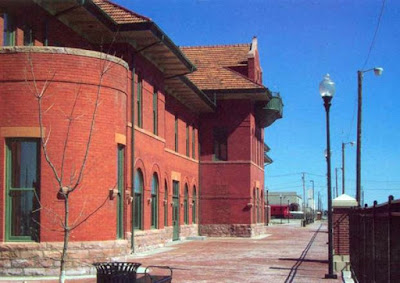frontier
town gunfights saloons cows and western trails
History Fort Mann was the first settlement of non-indigenous people in the
area that became Dodge City. It was built by civilians in 1847 to provide
protection for travelers on the Santa Fe Trail. In 1865, the army constructed
Fort Dodge which remained in operation until 1882. The town of Dodge City can
trace its origins to 1871, when rancher Henry J. Sitler built a sod house west
of Fort Dodge to oversee his cattle operations located near the Santa Fe Trail
and the Arkansas River.
Dodge City was staked out in 1872 on the 100th meridian and the legal western
boundary of the Fort Dodge reservation. The early settlers traded in buffalo
bones and hides; with the arrival of the railroad, Dodge City soon became
involved in the cattle trade. The queen
of the cow towns resulted from the new Western Trail that branched off from
the Chisholm Trail.
Frontier town Dodge City had more gunfighters working at one time or another than
any other town in the West as well as saloons, gambling halls, and brothels, led
by the Long Branch Saloon and the China Doll brothel. By 1886, the cowboys,
saloon keepers, gamblers, and brothel owners moved west to greener pastures, and
Dodge City became a sleepy little town in western Kansas.
Dodge City sits above one of the world's largest underground water
systems
Culture Starting in the 1870s, the early city history fueled public
perceptions of frontier turmoil in the public consciousness. Gunfighters and
lawmen such as Wyatt Earp became celebrities, and sensationalized versions of
their activities entered period popular culture as the subject of dime novels. This
trend continued into the 20th century, as the rowdy Old West frontier town was
the setting for many films and television series such as Gunsmoke, the
longest-running prime-time TV drama in American history. In the Smallville TV
series, Clark Kent’s hometown is 200 miles (320 km) west of Wichita and Metropolis
is southwest of Dodge City.




No comments:
Post a Comment